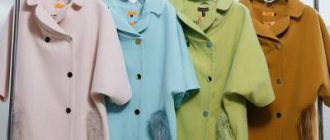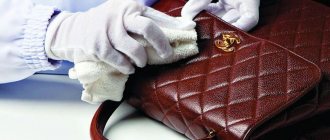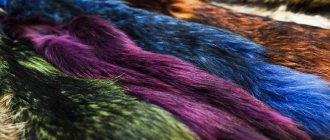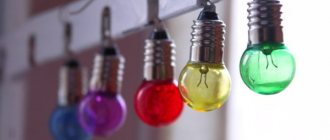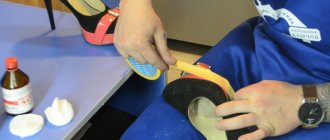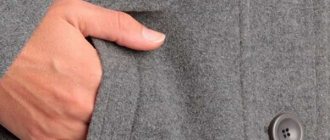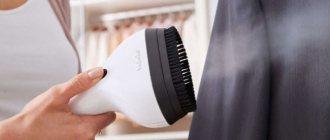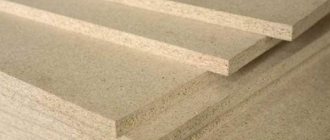Even expensive hats can lose their chic appearance over time. To update the product, you can dye a mink hat at home. Valuable fur requires delicate care, which means it is important that the procedure is safe. Detailed instructions and useful tips will help you update your accessory in 2-3 hours. Decide on the desired color - the method of painting depends on this.
Correct procedure
The coat is weighed to determine the required amount of paint and the instructions are carefully read. It says how much dry powder is needed for a certain weight. After this, you can proceed directly to the staining process, performing the following steps sequentially:
- Using a rubber brush, outer clothing should be cleaned of dirt. It is advisable to remove existing stains; not all dyes are able to hide them.
- The paint must be diluted in boiled water, and a bite must be added to the resulting solution. Its content must correspond to the quantity specified in the instructions.
- Follow the algorithm written on the packaging.
Dry painted items at room temperature away from heating appliances. They should not be exposed to direct sunlight. It is advisable to spread the coat on a horizontal surface, placing it on a sheet or hanging it on a hanger. You need to make sure that no smudges appear on it. By strictly following the steps indicated in the instructions, you will not get an unexpected result, and the coat will acquire a second life.
Yellow and brown
Having decided to get solar coloring, our ancestors could use more than two dozen plants. Some of them were used in their entirety: immortelle, heather, cuff, navel, string. And in the genus of gorse, shrubs and subshrubs of the legume family, there is even a species that is called just that - dyeing. For the same purpose, flowers and leaves of goldenrod (also called golden rod), jumper (also having a second name - impatience), and sickle grass were used. Only flowers were taken if it was about the umbrella hawkweed and, oddly enough, the meadow cornflower, and also the horned frog. By the way, the leaves of birch and black grass (or verbolosis) were used. The zealous owners also did not forget about the root system of plants: sorrel and iris turned out to be useful here (it received a very affectionate nickname - iris). And the bark was taken from hazel and wild apple trees for dyeing purposes. Sometimes certain plant parts were chosen based on the material to be dyed. Thus, the leaves and stems of the moss moss (aka the ram), as well as the flowers of the rapeseed, were taken into account when working with wool, and the swimsuit was used only for canvas. Both yellow and brown tones can be obtained from the bark, leaves and berries of alder buckthorn. As experts note, the dye from this plant is very resistant to fading.
What fabric can be dyed
First of all, you should compare the real possibilities and the desired result. Not all types of fabrics can be dyed yourself. Natural and mixed fabrics are easier to process: cotton, linen, wool, silk. Synthetics cannot be restored efficiently at home. Its fibers are not able to absorb aniline dye components. The color will probably change, but after the first wash the item will fade.
Painting children's things yourself will help you save your family budget. Due to increased pollution, they quickly lose their bright color and decent appearance. In case of severe fading, dark shades of paint help. It is easier to dye denim at home.
How to dye fabric coffee
An easy way to dye fabric at home is to use an ingredient like coffee, which you probably already have at home. To dye fabric coffee, you'll only need a few simple items that you probably also have in your kitchen cabinet. For work, it is best to use natural fabrics such as cotton, wool or linen. The entire dyeing process is quite quick and relatively neat, while it will allow you to change the look of almost any fabric to your liking.
Dyeing fabric by soaking it in coffee
- If you need to dye your fabric a very dark coffee color, use more coffee or use dark (strong) roasted coffee. If you want a lighter color in your coffee, use less coffee or use a light or medium roast.
- As an alternative to brewing multiple servings of coffee beans at home, you can use instant coffee or purchase ready-made coffee from your local cafe or coffee shop. However, the latter option will cost you much more.
- Once the excess coffee is washed off, you can already see how heavily stained the fabric is. If you want to make the material even darker, you can put it back into the coffee.
- When you achieve the desired result, prepare a large container, fill it with cold water and place a cloth in it. You can add vinegar to cold water and soak the fabric in this solution for ten minutes to set the paint.
Dyeing with a cloth for wiping coffee grounds
- The fabric can be washed together with other clothes or individually (depending on your preference).
- Be sure to follow the fabric's washing instructions (if any).
- You will need a large enough amount of coffee grounds to cover the entire area of the dyed fabric. You will probably have to brew the coffee several times.
- Use a dark roast to dye the fabric a darker color, or use a lighter roast if you don't want the fabric to be very dark.
- This is a great way to use coffee grounds effectively. If you regularly drink bean coffee, then for this coloring method you can gradually accumulate the required amount of thick coffee.
Dyeing with binder dye
- The fabric can be washed together with other clothes or individually (depending on your preference).
- Be sure to follow the fabric's washing instructions (if any).
- If you need to dye your fabric a very dark coffee color, use more coffee or use dark (strong) roasted coffee. If you want a lighter color in your coffee, use less coffee or use a light or medium roast.
- As an alternative to brewing multiple servings of coffee beans at home, you can use instant coffee or purchase ready-made coffee from your local cafe or coffee shop.
- First, stretch the fabric completely.
- Then place your finger in the center of the fabric (or objects) and begin to turn it clockwise with your hand.
- The fabric will gather as you move. Make sure it lies in the right folds and forms round outlines (a wide, low cylinder like a pie).
- Once the fabric looks like a cake, tie rubber bands around it to divide it into sections the same way you cut the cake into eight pieces.
Types of Dyes
The composition of the fabric and the purpose of the dyeing procedure will determine what type of dye will need to be used. In art and sewing stores you can purchase paint in the form of:
- powder;
- fabric markers;
- spray;
- coloring paste mass.
If you need to update the color or evenly tint the item, you should opt for powdered aniline dyes. They can be used in the washing machine, or you can dye the product by hand. If they are solving a more complex artistic problem, choose acrylic paints in any suitable release form. It should be remembered that the chemical composition of dyes is quite different and is not suitable for all types of clothing. More details about this are written in the instructions, which you should definitely read. How to dye clothes and what paint to choose? This is interesting: dyeing a down jacket.
Acrylic paints
Acrylic dyes cotton, natural silk, and wool well. It is better to check the possibility of dyeing synthetics in the instructions. This type of paint contains pigments that are harmless to humans, acrylic binders and water. The presence of the last component allows you to dilute the paint with water to obtain lighter shades
When choosing acrylic paint, you should pay attention to the markings. Only compositions marked “For fabric” are suitable for dyeing clothes.
You can paint things with acrylic without this mark, but then the result of the work will be unpredictable. Acrylic, when working with it, is easily washed off with water, but after drying it is firmly embedded in the fabric. Finished products are perfectly resistant to machine washing at 40 degrees, as well as hand washing in a basin, but the first few times it is better to wash the dyed clothes separately from other items. This dye is perfect for tie-dai and batik techniques and for making complex patterns on clothes, as it spreads moderately over the fabric during application.
Acrylic paint for fabrics
Aniline dyes
These paints are used for all types of natural fabrics, leather, as well as for mixed textiles, which contain more than 50% natural fibers. Recently, aniline pigments for synthetics have appeared on the market. The possibility of coloring artificial materials is indicated in the instructions. The dyes have an organic composition; dyed products do not have a toxic effect on the owner’s skin. The paints are sensitive to the sun and aggressive washing at high temperatures, but with proper care of the product they will delight the eye with bright colors for more than one season. Aniline dyes are widely used in the textile industry. For home use, powder and liquid forms of the dye are available, which are then diluted in water. In order for the paint to adhere to clothing, the item is boiled in a dye solution, then dried, steamed and washed several times to remove any remaining pigment. This pigment can be used to dye clothes in the washing machine.
Aniline dye for fabrics
Natural paints
This type of dye is suitable for all types of natural textiles, however, dyeing results are difficult to predict, so it is recommended to test the composition on a small area of fabric. Natural pigments are less resistant to washing powder and sunlight, but are less likely to cause allergic reactions. How can you dye clothes? The following colors are obtained naturally:
- red - from beets, blueberries, ripe elderberries;
- yellow - from wormwood branches, orange peel, ground turmeric;
- ocher - from celandine juice;
- brown - from tea, coffee, henna, onion peels and oak bark;
- blue - from blackberries, a mixture of spinach and curcumin;
- green - spinach, elderberries;
- gray - from bearberry, broom.
Clothes are tinted in the prepared broth, the temperature of which is maintained at around 60 degrees. After some time, the paint is fixed with special substances (ferroammonium and potassium alum, copper sulfate, etc.), then rinsed and dried. Dyeing clothes with natural compounds is a very labor-intensive, but very exciting process, which is suitable for creating plain clothes in boho and folk styles.
Natural dyes
What needs to be prepared for painting
Before you begin the dyeing process, you should find out what material the outerwear is made of. The final result largely depends on this. Manufacturers use the following types of fabric for sewing:
- Natural. For painting this is the most acceptable option.
- Synthetic. Such materials are practically not paintable. The risk may not be worth it.
- Mixed. As a result of the procedure, the clothes acquire a paler color.
It is important to know! Sometimes the coat label indicates the fabric composition that does not correspond to reality. It is recommended to paint the patch first, it is always attached to a new product.
There are certain coloring rules that must be strictly followed:
- the coat must be clean;
- before the procedure, it is soaked in warm water;
- After completing the procedure, the product is thoroughly rinsed until the water is clear.
If you decide to dye your coat a different color, you should buy the desired shade of dye, a special brush and vinegar in advance.
Preparatory stage
When working with synthetic fabric, it is worth considering that the result may not meet your expectations, since only products made from natural fibers can be easily dyed. In the case of synthetic fabric, it is recommended to be especially careful, since the dyeing result will depend on the quality of the dye. The selection of shade deserves special attention; it should be as close as possible to the original so that the item does not lose its tone.
Before you start painting the product, it is recommended to remove all decorative elements. If the item is large, then before painting it is worth undoing the seams along which the item will be sewn.
It is important to use a sufficient amount of dye, so before purchasing the dye and the procedure, the product must be weighed. If there are stains and other contaminants on the product, they must be removed before painting.
If there are stains and other contaminants on the product, they must be removed before painting.
Preparing a fur hat for dyeing
Before painting, you must carefully clean the product from dust and grease that has accumulated during wear.
To do this, you can use an ammonia-soda solution prepared according to the following recipe:
- 1 liter of water;
- 1 tsp. dish cleaning products;
- 10 g soda;
- 5 g of ammonia;
- 2 tsp. salt.
A brush is used to distribute the product evenly.
You can also use a mixture of water, vinegar and alcohol in equal proportions for treatment.
It is also important to check the skins or sewn fur cap for exposure to water to check the quality of the fur - the leather base on which the pile is attached. If it remains strong, you can begin painting, but if it swells, becomes soft, or breaks under tension, it is better to refuse to restore the cap.
To protect against chemical attack, it is best to treat a solid base with glycerin or any nourishing cream to avoid drying out and brittleness during drying.
When restoring a worn item, it is necessary to eliminate abrasions and tears by making fish-shaped cutouts and either filling them with fur inserts or sewing them from the inside out.
Weak spots are strengthened by gluing strips of spunbond or non-woven fabric using Moment-1 glue.

